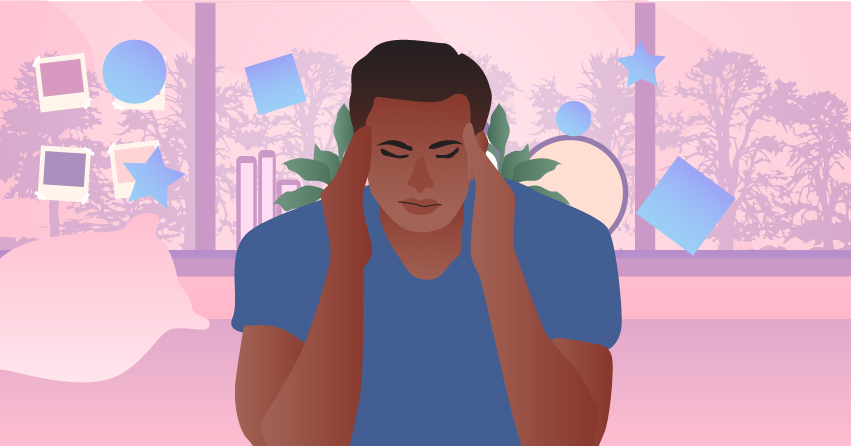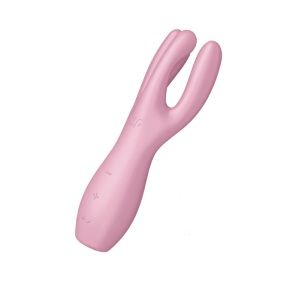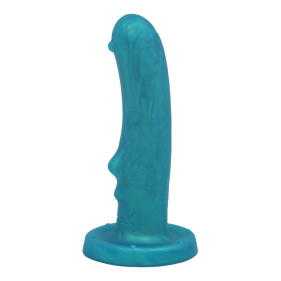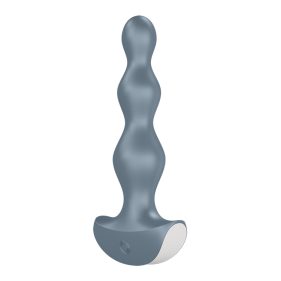
Disclaimer: This objectophilia article is meant to be a source of valuable information for the reader; however, it is not a substitute for direct expert assistance. Seek help from a professional therapist or counselor for further information.
It’s a known belief that everyone deserves to love and be loved. However, others have it harder than others regarding love, particularly with people who are in love with inanimate objects. Society perceive them as freaks or perverts.
However, loving non-living things, known as objectophilia, are rooted in things that are more complicated than just desperation or perversion. For this guide, we will be discussing what objectophilia is and possible reasons why people engage in it.
What is Objectophilia?

Objectophilia, also known as objectum sexuality, is a strong romantic or sexual attraction to an inanimate object. It’s considered paraphilia, an umbrella term for conditions involving intense sexual urges toward atypical objects, scenarios, fantasies, and behaviors.
Not all objectophiles are the same. Some see the objects as living things they could communicate with. They may end up talking to them, touching them, and sometimes having sexual activities with them. Meanwhile, some objectophiles don’t necessarily treat their partners as human beings, but the item has certain characteristics that make them want to commit to it.
There are also objectophiles who only fetishize the items; they only like involving the item in their sexual acts. They don’t see the item as a romantic partner and may even engage in human relationships. Again, not all objectophiles have the same relationship preferences with their object-partners.
To know if you have this condition or not, simply ask yourself— are you having strong romantic or sensual feelings about a specific item or place?
Loving certain items because of their sentimental value isn’t what objectophilia is. This condition can only occur if you simply love the item for what it is and you’re willing to commit to this object. You may also be urged to see or touch the item throughout the day, just like when a person craves their partner’s presence.
Real-Life Objectophilia Stories
If you’ve just heard of this term, you probably think we’re just kidding around or making things up. We get that you’re doubting it, but there are tons of real-life stories about objectophiles across the globe, proving that love could transcend all barriers.
1Eija-Riitta Eklöf-Berliner-Mauer and the Berlin Wall

The first documented objectophilia case occurred in 1979 when Eija-Riitta Eklöf-Berliner-Mauer married the Berlin Wall. It all started when she was seven years old when she saw the Berlin Wall on television.
She eventually married the wall by June 17, 1979, hiring an animist who served as a “translator” for the wall and said its wedding vows. Aside from being the first person to express objectophilia, she also invented the term “objectum sexuality.”
-
₱4,045.00
-
₱8,660.00
-
₱4,045.00
2Erika Labrie and the Eiffel Tower

One of the common misconceptions about objectophilia is that it only occurs to people deemed “losers.” This isn’t the case for most objectophiles, as most have fruitful careers and social lives, including Erika Labrie, the person known to have married the Eiffel Tower.
Erika Labrie is an American competitive archer, bagging multiple achievements in different tournaments. She was immediately attracted to the Eiffel Tower after encountering it in 2004. She ended up getting married to it in 2007 through a commitment ceremony.
As of today, numerous sources reported that Erika Labrie has ended her relationship with the Eiffel Tower and is currently interested in a fence.
3Nathaniel and a Red 1998 Chevy Monte Carlo Car “Chase”

If you’re an avid viewer of My Strange Addiction, you’ve probably stumbled upon the infamous episode of a guy “having sex” with his car. Contrary to the show’s name, this isn’t necessarily an addiction but a case of objectophilia.
Nathaniel started his relationship in 2005 with Chase, a red chevy monte Carlo car. They even have “Can’t Fight This Feeling” by REO Speedwagon as their theme song. He also gets intimate with his car, kissing and caressing its exterior and interior parts. As expected, Nathaniel’s roommate and family are worried about his unconventional relationship, but his love remains.
-
₱1,245.00
4Jodi Rose and the Le Pont du Diable Bridge

Jodi Rose has been traveling the world for her experimental music project. As she was busy recording the vibrations from bridge cables, she encountered the Le Pont du Diable Bridge, France. She was enthralled by his presence and eventually married the bridge— more of a symbolic marriage, as their union isn’t legally recognized in Australia or France.
“He gives me a safe haven, brings me back to ground myself, and then lets me go again to follow my own path, without trying to keep me tied down or in thrall to his needs or desires. I am devoted to him,” she said in an interview.
5Meirivone Rocha Moraes and a Rag Doll “Marcelo”

One of the most recent objectophilia cases is Meirivone Rocha Moraes and her husband, a rag doll named Marcelo. Unlike other objectophiles, Meirivone had an actual wedding ceremony, complete with her 250 friends and family. Her relationship also has an unusual origin, as Meirivone didn’t just stumble upon Marcelo while traveling the world or watching TV. Her mom created Marcelo.
She complained about not having a partner, so her mom decided to see a ragdoll as a companion for her. She got “pregnant,” and because she didn’t want to give birth out of wedlock, she arranged a formal wedding.
As for her pregnancy, she eventually gave birth to a new ragdoll, live streamed with 200 viewers. As of today, she seems to be enjoying her family life with Marcelo and even has a TikTok account to document it.
-
₱8,745.00
-
₱1,680.00
-
₱11,526.00
6Akihiko Kondo and a Hatsune Miku Hologram

Objectophilia isn’t just limited to tangible objects, as shown by Akihiko Kondo, who married Hatsune Miku, a fictional hologram pop star. He started recognizing feelings for Miku in 2008, as she helped him cope with the depression caused by his bullies at work. He bought a Hatsune Miku stuffed toy and started bonding with her.
Fortunately for him, he eventually was able to actually communicate with her in 2017 through a Gatebox. This machine allows owners to interact with fictional characters via holograms. The price is pretty steep, specifically $1300. Still, it was all worth it for Akihiko, especially when he was able to propose and get married to the hologram by 2018.
As of today, he is still committed to his wife, but as Gatebox announced that it was discontinuing service for Miku, he’s experiencing issues in the marriage.
7Rain Gordon and a Briefcase “Gideon”

A woman bought a briefcase as a prop for a photoshoot. Little did she know, this briefcase was her future husband.
Rain Gordon, a teacher, has always been attracted to objects. When she first met the briefcase in 2015 named Gideon, she felt an instant connection. She ended up dating this briefcase, having “philosophical conversations for three or four hours.”
However, she knew this relationship was unconventional, so she attempted to get into a relationship with a human in 2017. However, her connection with the guy isn’t as strong as the briefcase. They ended up breaking up. She continued being in a relationship with Gideon and marrying him by 2020.
8Amanda Liberty and Chandeliers

Objectophiles can have non-monogamous relationships, just like Amanda Liberty, who seemed to be into light fixtures. Her attraction to objects started in her teenage years. However, due to the lack of information about object sexuality, she was initially confused about her feelings.
She then started a long-distance relationship with The Statue of Liberty. After that, she started dating a few chandeliers in her collection. She eventually decided to only marry one of the light fixtures— a 91-year-old chandelier named Lumiere.
Possible Causes of Objectophilia
Objectophilies are often mistaken as loners desperate for love. But as mentioned above, most of the featured objectophiles have adequate support groups, impressive careers, and dating opportunities. They can get into relationships with actual people but have chosen not to. There’s still no proven cause why objectophilia exists, but below are some of the reasons that experts are speculating on.
1Animism

Some experts say that people engage in objectophilia because they believe in Animism. It’s a religious perspective wherein all objects, places, and non-human creatures possess a distinct spirit. This term was first discussed by Sir Edward Burnett Tylor in his work Primitive Culture (1871) and is known to be a belief system of multiple Indigenous groups.
With this belief in mind, objectophiles develop social, romantic, and/or sexual relationships with inanimate objects, believing that a soul exists inside them. Some even say they can communicate with these items due to their faith in Animism.
-
₱1,295.00
-
Original price was: ₱1,295.00.₱841.75Current price is: ₱841.75.
-
₱1,295.00
-
₱1,295.00
2Synesthesia

Another theory for the existence of objectophiles is synesthesia. It’s a condition in which a person experiences senses in a non-linear way.
For example, when someone says a person’s name, a person doesn’t see a face in their mind; they see color or shapes. Another example would be hearing the word orange, but instead of visualizing orange, you tasted a citrus fruit.
If a person has synesthesia, they may have perceived objects differently, seeing them as human beings instead of mere items. They may also feel love or arousal in an unusual manner, such as feeling solely through inanimate objects. However, the studies are still limited to proving that objectophiles have synesthesia.
-
₱4,745.00
-
₱4,045.00
-
₱3,395.00
-
₱2,695.00
3Autism Spectrum Disorder

Another hypothesis as to why people experience objectophilia is because they have autism, specifically Asperger’s Syndrome.
People with this condition have difficulty interpreting social or emotional issues, seeing another person’s perspective, and responding to sensory stimuli. Because of these symptoms, they may have difficulty with social interactions and cannot share their feelings with another person.
As a result, they may seek comfort in objects since it doesn’t require them to communicate and behave as a regular person would. There’s even a 2019 study discussing Asperger’s Syndrome as a likely cause of objectophilia. Still, more research is needed to solidify this claim.
4Social Development Issues

An objectophile may also have social development issues caused by their environment, family, peers, and other related risk factors. If the issues were kept unresolved, they might resort to being in a relationship with objects to cope with their issues.
Having social development issues may also result in difficulty interacting with other people, hindering the process of getting into relationships.
What You Should Do If You Have This Condition

If you find yourself falling in love with an object, there are two possible paths that you could take.
First Option
First, you can consult a psychiatrist and/or psychologist. A mental health professional can help you understand your condition and provide you with ways to overcome it.
This option is difficult (and expensive considering medical fees), but the result could be an easy life. Once you’re done having feelings for objects, you may end up engaging in romantic or casual relationships with other people. There wouldn’t also be issues with the interactions you have with families, friends, and colleagues. You’ll basically live a regular yet peaceful life.
Second Option
The second option is acceptance; you’ll simply love the object and treat it as respectfully as you would with a human being.
The second option is easy; you won’t spend a penny and simply live happily with your partner. However, this could result in a difficult life. You’ll probably spend the majority of your life living in isolation. If you publicly express your love to the inanimate object, your friends and family may see you differently and avoid having meetups. There are also tons of people out there who are willing to bully and ridicule other people with unconventional beliefs.
Additional Note:
Keep in mind that these are theoretical paths only; not all objectophiles will live in isolation and have zero moral support. Not everyone who seeks treatment will end up with a satisfying life. It still depends on you on how you’ll manage this condition.
Frequently Asked Questions

Still have questions about this condition? We’ve answered some of the common inquiries below. Objectophilia resources are still limited as of the time we’re typing this, so we can’t fully give concrete answers to some of the questions. We would also recommend seeking direct assistance from medical professionals for further information.
1Is objectophilia a fetish?
Objectophiles come with different preferences. Others may consider their attraction to objects as a fetish. In contrast, others may perceive their commitment to objects as they would in an actual relationship. The bottom line is that objectum sexuality may be considered a fetish or not, depending on the person who has this condition.
2Is objectophilia a sexual orientation?
Though some online resources claim that objectophilia is a sexual orientation, people are still debating whether or not this condition should be seen as an orientation.
3Does using sex toys mean I have objectophilia?
Using sex toys doesn’t necessarily mean you have objectum sexuality. You don’t have this condition unless you end up falling in love with a love toy and are committed to being their sexual or romantic partner.
4How do people with objectophilia get intimate with their partners?
It depends on the person. According to our research, some objectophiles touch objects just as a person would do with a human partner. Some would caress, kiss, or hug the item. On the other hand, some people simply have philosophical or spiritual “conversations” with their partners.
5Are there organizations or groups for people with objectophilia?
There is one organization for objectophiles, the Objectùm-Sexuality Internationale (OS). It was founded by Erika LaBrie back in 2008. The organization aims to advocate for people in relationships with objects and provide resources about objectophilia.
Takeaway
Objectophiles prove that “love transcends all barriers.” Despite the judgment and ridicule that they get from others, they continue to express their love for their partners.
However, we should also remember that objectophilia is still a complex phenomenon and that there are several reasons why objectophiles feel the way they do. More research and surveys are needed for us to fully grasp this orientation. In the meantime, as long as objectophiles aren’t hurting other people, the best thing we can do is to let them be.




















